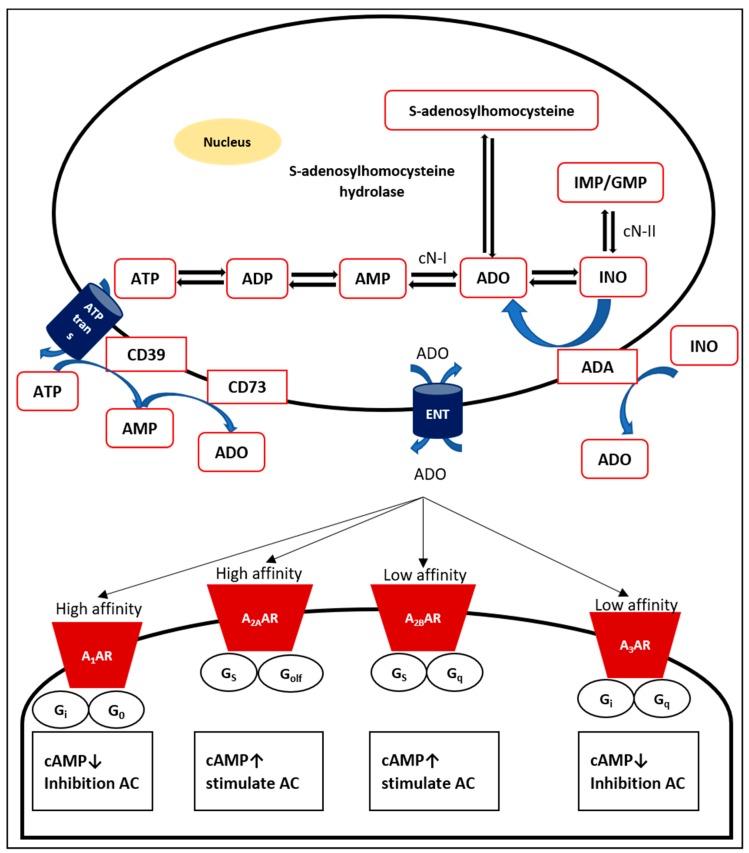Figure 1.
Production, transport and metabolism of adenosine. Intracellular adenosine is produced via dephosphorylation from the main source, AMP, via both cN I and cN-II and hydrolysis of S-adenosyl-homocysteine through the enzyme S-adenosyl-L-homocysteine hydrolase. The extracellular formation of adenosine is the result of enzymatic cascades consisting of ATP transport, hydrolysis of ATP and ADP by CD39 to form AMP, and dephosphorylation of AMP by CD73. Extracellular adenosine binds adenosine receptors (A1AR, A2AAR, A2BAR, and A3AR) on the surface of cells. Each AR is a GPCR that transmits the signal from adenosine by activating cAMP.

